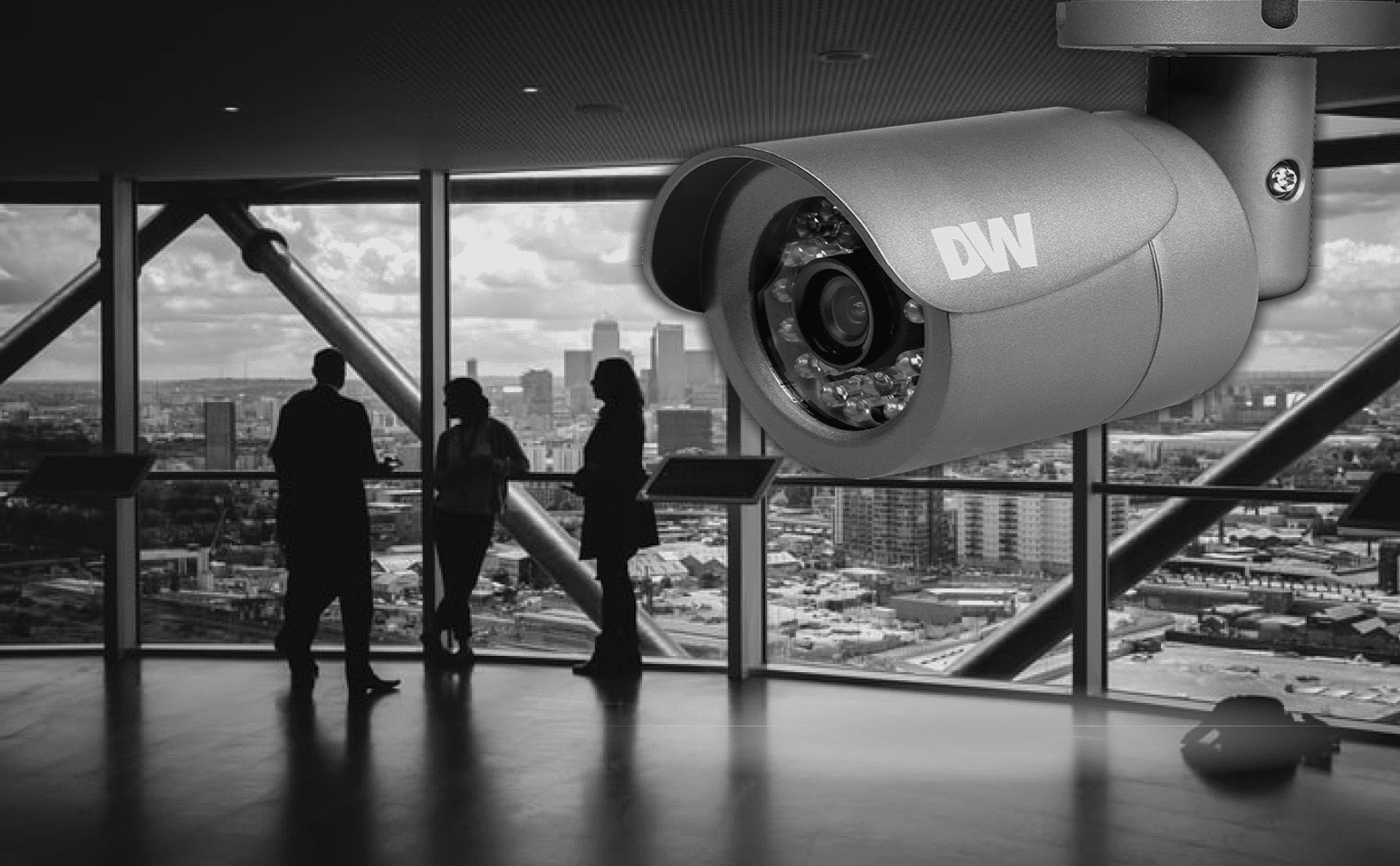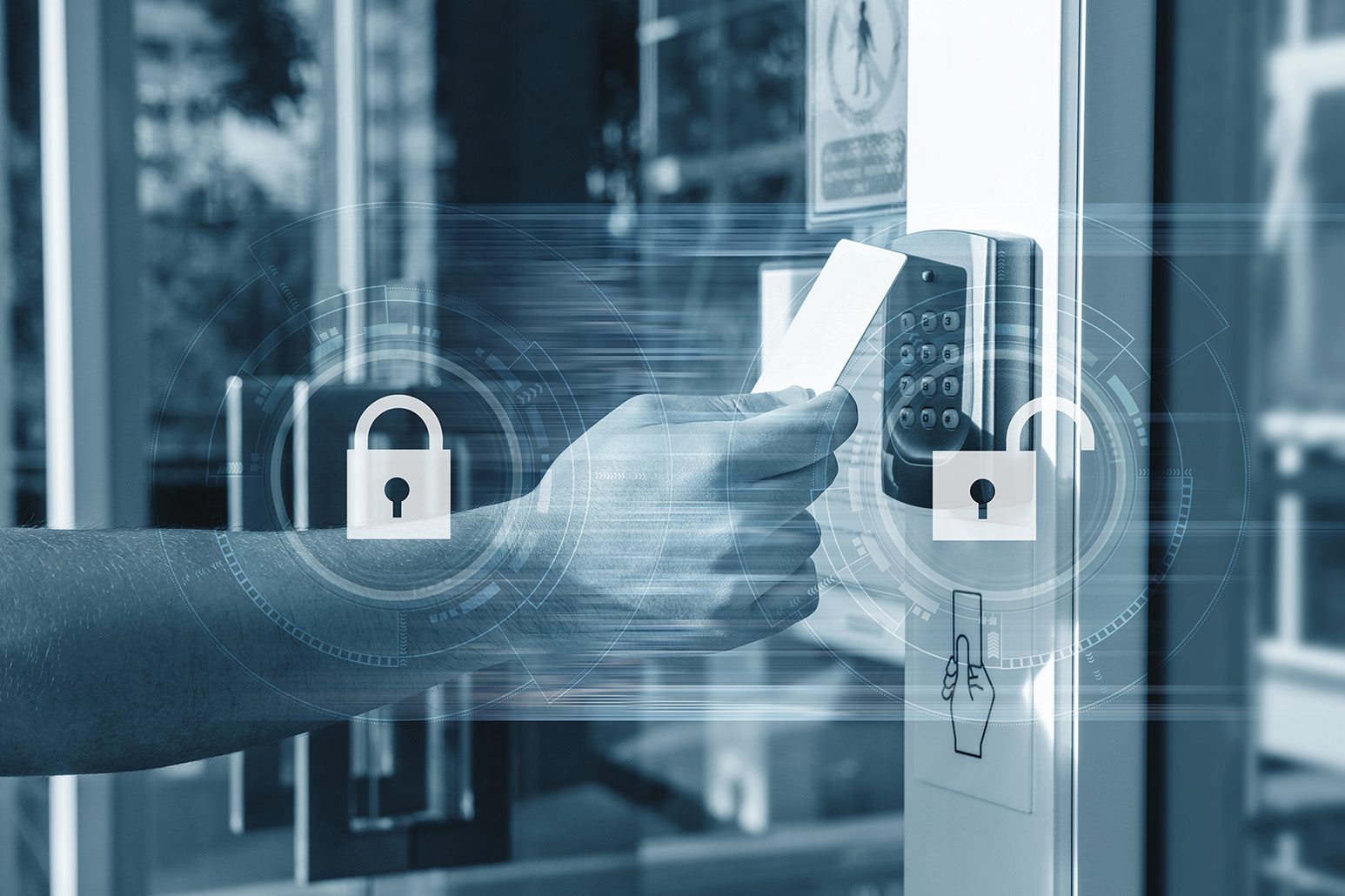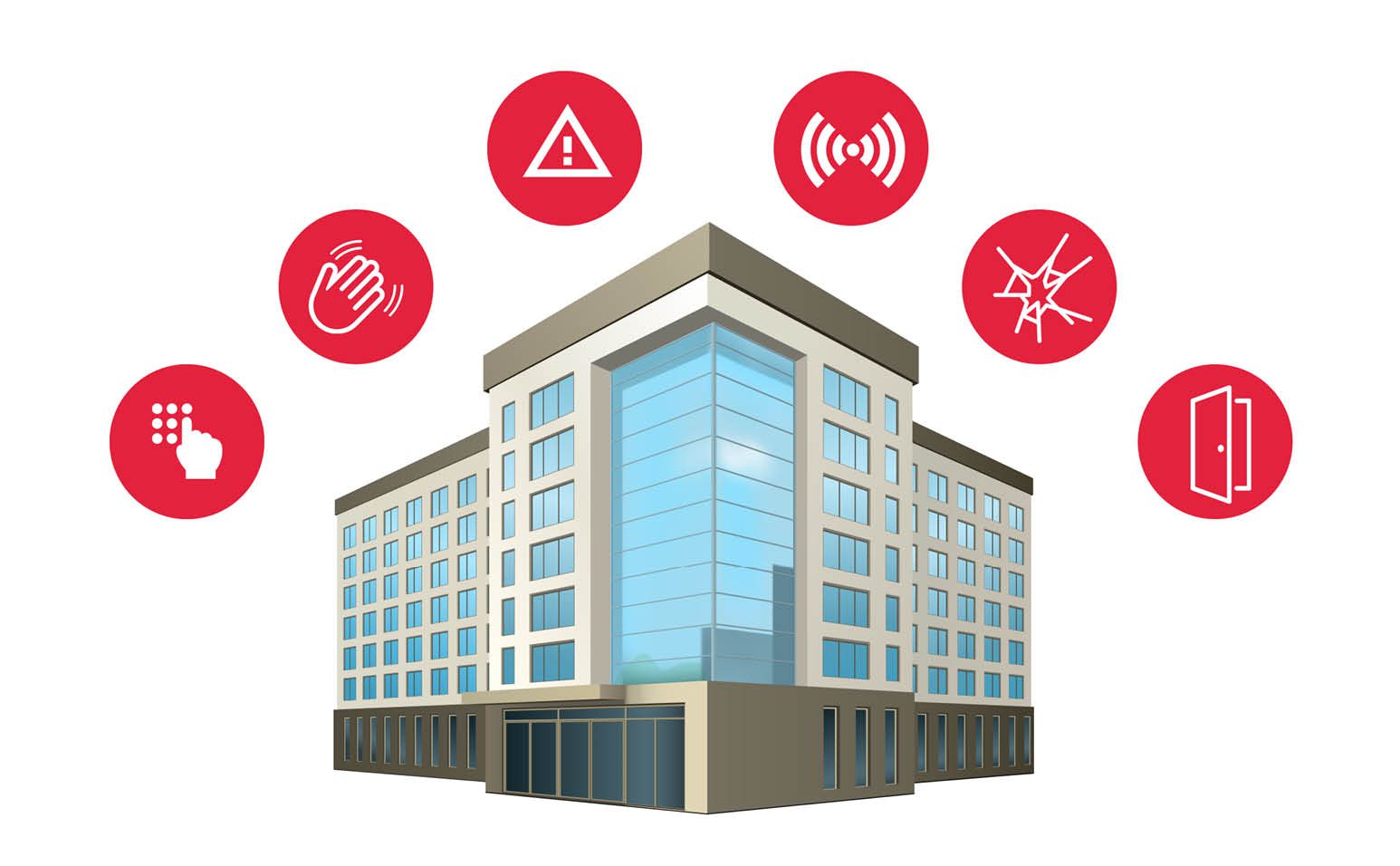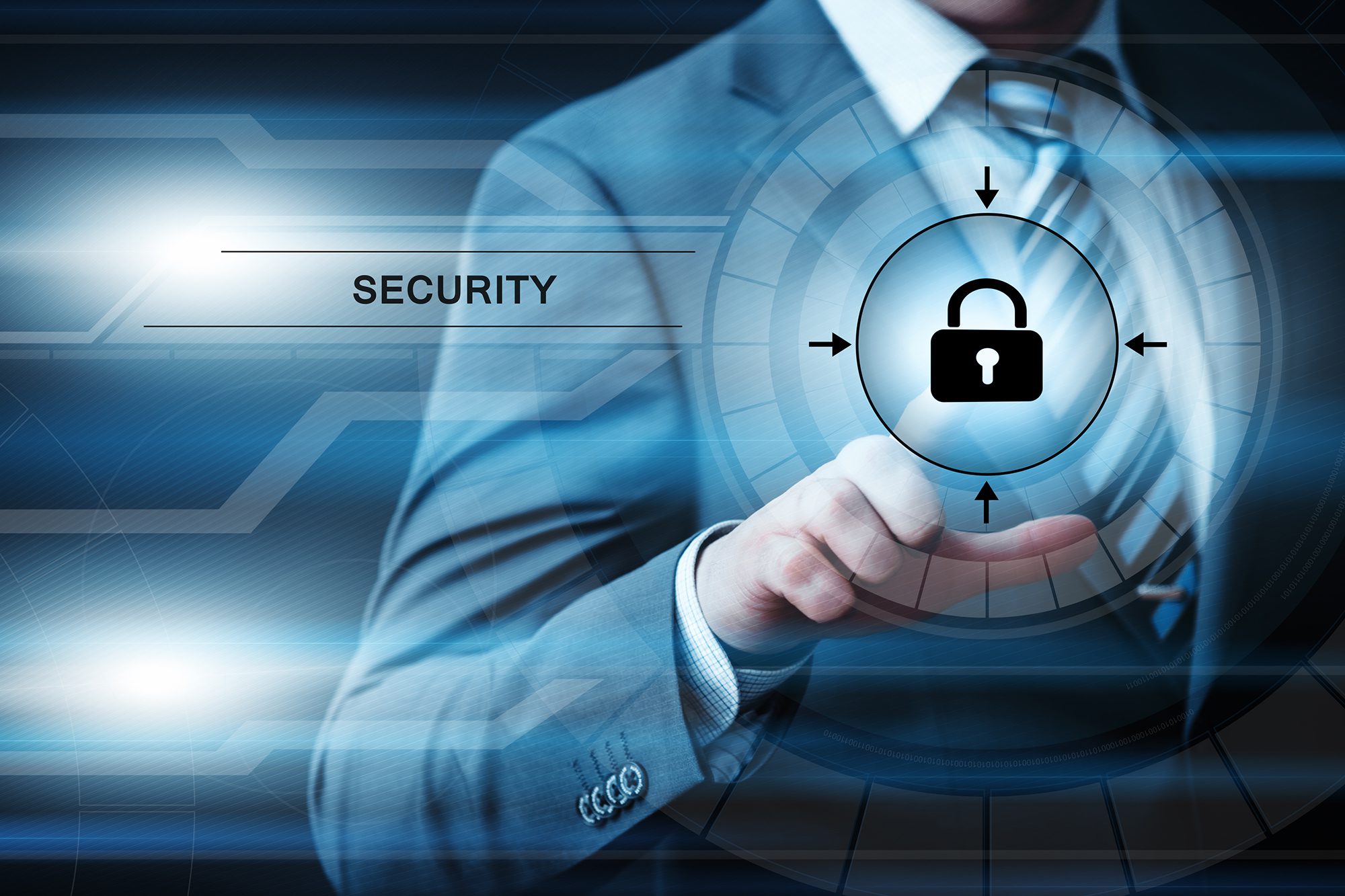
 To the uninitiated, designing a security solution for a business may seem like a simple task. After all, if you throw up a few door sensors, glass break devices, and motion detectors, then your business is safe from break-ins and other forms of malfeasance—right? Truthfully, while these devices are certainly a part of a comprehensive security package, such a bare-bones solution doesn’t provide proper protection for a wide berth of security scenarios, including:
To the uninitiated, designing a security solution for a business may seem like a simple task. After all, if you throw up a few door sensors, glass break devices, and motion detectors, then your business is safe from break-ins and other forms of malfeasance—right? Truthfully, while these devices are certainly a part of a comprehensive security package, such a bare-bones solution doesn’t provide proper protection for a wide berth of security scenarios, including:
A way to visually identify intruders
A way to limit unwanted visitors during business hours, when an alarm system is not likely to be armed
A way to monitor for extreme temperature fluctuations in areas such as server rooms and refrigeration units
A way to visually monitor inventory, fiscal transactions, or areas housing sensitive documents
A way to monitor activity in exterior areas such as parking lots and work yards
When it comes to protecting your business and everything within it, a system that covers “some” of your security vulnerabilities simply isn’t enough. A commercial security solution requires a balance of reactive components (burglar alarm) and proactive components (video surveillance and card access) to provide balance and well-rounded coverage of the modern business—and a professional security provider that’s well-versed in every facet of comprehensive business security.
Intrusion alarm systems
Commonly referred to as “burglar alarm systems,” intrusion systems boil down to two essential tasks: detection and signaling. Devices such as the aforementioned door contacts, glass break sensors, and motion detectors are installed throughout a facility to detect signs of a forced door, broken window, or movement where there should be none. Once detected, the devices send an alarm signal to the main control panel, which triggers the alarm throughout the property through sirens and strobes.
A commercial intrusion alarm system only functions as intended if it is used in conjunction with professional monitoring. On a monitored system, the main control panel will send an alarm signal via a cellular/internet communicator to a designated monitoring center, such as the award-winning EPS Monitoring Center stationed in Grand Rapids. Once received, the signal will be interpreted by trained operators, who will contact those on the business’s call list and/or dispatch emergency responders. Without professional monitoring, an intrusion system will alarm onsite—and that’s it. In the event of a break-in after hours, the alarm may scare away the burglars, but it won’t dispatch the police to investigate the incident or apprehend the culprits.
While the name “intrusion alarm” tends to focus on the anti-burglary tendencies of the system, there are other less-heralded protection benefits that can save business owners beaucoup bucks. Intrusion systems can help to detect water leaks early, potentially saving thousands on water damage repairs or lost inventory. Temperature sensors can help to keep rooms sufficiently cold or warm depending on the need. Preventing a server room or refrigerator/freezer from becoming too warm for too long can help prevent incalculable losses in data or stock.
An intrusion alarm system is the critical cornerstone of any comprehensive business security solution. Without one, the only thing stopping burglars from having free reign in your building is the strength of your physical door locks and windows. Intrusion systems are an excellent means of both detection outside of business hours when businesses are most likely to be targeted by criminals and keeping an eye on costly environmental hazards.
 Video surveillance systems
Video surveillance systems
Intrusion systems are the backbone of any business security solution, but their chief strength—protection after business hours—is why they can’t be relied on to protect businesses during business hours. While temperature sensors and water/flood detectors are “always on,” burglary-specific sensors only work when the system is armed by design to avoid employees and customers tripping devices during business hours. Even then, an intrusion system isn’t designed to prevent business hours threats to a business such as accidents, retail theft, or even stealing on behalf of employees.
These shortcomings on the intrusion side of security systems are covered by video surveillance systems. A well-designed video surveillance system can cover potential points of conflict like points of sale, public-facing stock, inventory and supply rooms, and others in order to lend business owners an eye on (and keep a record of) the human side of operations. Additionally, cameras can be positioned throughout a facility to surveil parking lots, warehouses, and assembly lines for use in recording accidents or other incidents that may need to be kept and reviewed at a later date.
Cameras also come in handy as a deterrent against break-ins. Studies have shown that the visible presence of a security system—and specifically cameras—are highly effective in causing would-be intruders to select another target. Additionally, a camera system can help visually identify any malfeasants with the audacity to deface, destroy, or break into a secured business. For businesses with a human security team, cameras can be monitored and even controlled by an operator to pinpoint and mitigate active trouble spots. Even businesses without a human monitor can use facial recognition software to train certain cameras to follow people in view as they pass by.
 Card access systems
Card access systems
Intrusion systems can react to break-ins and cameras can help deter and identify those involved, but this leaves one glaring hole: how do you prevent unwanted visitors to enter a facility during business hours? While some companies do field a security team that can help differentiate employees from guests at the door, the average company can’t afford the luxury.
This is where a card access control system helps to round things out. By using radio frequency (RF) technology, employees can be identified using cards or fobs at an electronic reader, which in turn releases a magnetic lock to grant entry. With these cards and fobs—and by training employees to not let anyone in behind them—a business can use card access to control who is allowed into their building 24/7.
Card access control systems fill the gap left by intrusion and video surveillance systems. A camera can watch an employee enter a room and leave with inventory; a card access control system can prevent unauthorized personnel from entering the room entirely. A card access system can funnel customers into common areas while preventing them from accessing employee-only areas. Managers and owners can be granted full access to every room; HR rooms containing sensitive information can be limited to HR representatives; even office workers can be granted separate permissions than those working in the warehouse. Guest passes can be created daily to allow certain visitors temporary access to a facility, which can then be revoked immediately upon departure.
Card access systems allow administrators to track the usage of individual employees to determine what doors they’ve been using and when, which is especially helpful when needing to determine those who may have been in the proximity of a conflict. Administrators can also easily deactivate an employee’s access whether or not they’ve turned over their card/fob, a helpful ability in the event of the departure of a disgruntled employee. In an extreme scenario, administrators can even initiate a lockdown on all doors in the event of an active shooter or other incident to silo the problem into a specific area and prevent its spread.
 Synergizing business security systems
Synergizing business security systems
Of course, card access systems come with their own limitations. Burglars may choose to break a window versus trying to thwart a magnetically-locked door. Well-intentioned employees may hold the door open for guests, granting access to unidentified visitors. These gaps, however, are covered by the strengths of both intrusion alarm (detection and signaling) and video surveillance systems (visual identification). While “burglar” alarm systems tend to snare the lion’s share of attention from prospective business owners, a comprehensive business security system is actually a combination of multiple systems, utilizing the benefits of intrusion alarm, video surveillance, and card access systems to create a well-balanced solution whose individual parts synergize into a powerful protective apparatus.
Some security providers excel at one or two discipline of security systems. At EPS Security, we pride ourselves in our expertise across the board. For more than 65 years, we’ve built intrusion, video, and card access systems in businesses ranging from Mom-and-Pop operations to complex facilities with multiple buildings and very specific vulnerabilities. (We’re also experts in life-saving fire alarm/voice evac systems, too.) We work with our customers to build the custom security solution that addresses their unique needs and provide the professional monitoring required of every complete security package.
When it comes to securing your business, “good enough” isn’t good enough. If you’re looking at starting your business’s security from scratch or realize your current solution needs a buff, consider EPS Security and discover the peace of mind a truly comprehensive solution can bring.

